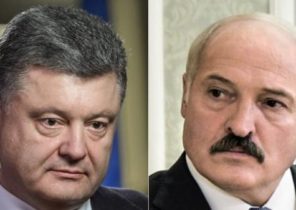March 10, at the Church in mount Vernon, Washington, gathered a choir of 61 people, and everything seems to be going on as usual. Two and a half hours the choir sang, ate cookies and oranges and sang again. But one of them three days shivering — then it turned out that he covid-19. In the coming weeks 53 fell ill, three were hospitalized and two died. On 12 may announced the Center for control and prevention of diseases USA, carefully restoring the tragedy.
During a pandemic covid-19 such “sverhuspeshnuyu” happened a lot. Database Gwenan knight (Gwenan Knight) and her colleagues from the London school of hygiene and tropical medicine, cites the outbreak in the hostel for migrant workers in Singapore (almost 800 infected), the concert in Osaka Japanese (80 infected) and Zumba in South Korea (65 infected). In addition, the compact flash was noted in the courts, nursing homes, meat packing, ski resorts, churches, restaurants, hospitals and prisons. Sometimes that one person can infect dozens of others, and other centers span multiple generations in different places.
Other infectious diseases also spread the focal. A number closer to 5 million, and we could expect major outbreaks. But SARS-CoV-2, like its closest relatives, severe acute respiratory syndrome (SARS) and middle East respiratory syndrome (BRS) tend to selectively attack certain groups, in this strange way sparing others. Scientists this news is encouraging — it is assumed that restricting mass gatherings, will be able to reduce the risk of sverhuspeshnaya. Other limitations — for example, for outdoor events, on the contrary, will be weakened.
“If you can predict exactly what circumstances lead to such a development, math tells us that the spread of the disease would rapidly limit,” says Jamie Lloyd-Smith (Jamie Lloyd-Smith) from the University of California in Los Angeles. He explores the spread of pathogenic microorganisms. Cases of sverhuspeshnaya remains poorly understood — the topic is sensitive, and there is a risk that the findings in patients may develop depression and fear of discrimination.
Disputes the spread of SARS-CoV-2, mixed on how many people the average patient infects. Without isolation and social distancing measures is the reproductive number (R) is about three. But in real life it turns out that some infect many, but others do not spread the disease. In fact, most often the second option, said Lloyd-Smith: “Everywhere there is the same model: most often R is zero. That is, the majority of cases simply do not transmit the infection further.”
That’s why in addition to R scientists operate on such a parameter as the scattering coefficient (k), he describes the number of foci of disease. The lower the k, the more the transmission comes from a small number of cases. The article 2005 in the journal “nature” (Nature) Lloyd-Smith and co-authors estimated that the outbreak of SARS, where a significant role was played by sverhuspeshnaya, k was 0.16. The estimated k for the epidemic of BRS 2012 was 0.25. During the Spanish flu of 1918, however, this figure was the unit — which indicates the relatively small role of individual lesions.
Rating k for SARS-CoV-2 are very different. In January, Julien RIOU (Riou Julien) and Christian Althaus (Althaus Christian) from the University of Bern have modeled the epidemic in China with various combinations of R and k and compared the obtained data with reality. They concluded that k for Covid-19 is slightly higher than for SARS and PRS. Like the truth, tells the Modeler from the University of Hong Kong Liang Gabriel (Gabriel Leung). “I don’t think it looks like a torso or BRS with their vast pockets of sverhuspeshnaya, says Liang. — But we see many concentrated pockets, where a significant proportion of cases can be reduced to a relatively small group of people”. But in a recent advance copy of the article Kucharski Adam (Adam Kucharski) from the London school of hygiene & tropical medicine deduced that k for covid-19 is only 0.1. “Apparently, somewhere in 10% of cases account for 80% of the total distribution,” says Kucharski.
This will help clarify the most puzzling aspects of the pandemic — for example, why have appeared in China, the virus took so long to spread around the world, and why the first cases in other countries (and in France the first patients appeared in the end of December 2019) has not led to more large-scale outbreak. Kucharski says that if k is equal to 0.1, the majority of chains of infection die out by themselves and to have any chance to catch virus should enter the country unnoticed at least four times. If you imagine that the Chinese epidemic is a powerful fire, whose sparks have scattered around the world, most of them simply went out.
Why coronaviruses more other pathogens tend to the foci is a really interesting question, and it was open, says Christophe Fraser (Christophe Fraser) from Oxford University. He studied the spread of the Ebola virus and HIV, and believes that in their case, one factor may be the transfer method. SARS-CoV-2 well appears to be transmitted primarily by droplets, but sometimes extends through the smaller aerosols, whose suspension longer hangs in the air — it turns out that one person infects many. Fraser believes that the majority of published cases of focal infection suggests aerosol transmission.
The role played by individual characteristics of patients. Some people emit more of the virus, and much longer — presumably due to differences in the immune system or the distribution of viral receptors in the body. In 2019, the study of healthy people showed that some exhale much more particles than others. (Part of this time is due to the loudness of the conversation). During the singing of the virus is more than talking, and that could explain the outbreak among the singers. Affects people’s behavior. The likelihood of transmission increases when a large number of contacts and netshareenum hand washing.
The closest scientists have come to understand where the emergence of pockets covid-19 are more likely. “Obviously, in enclosed spaces, the risk is much higher than outdoors,” says Althaus. Chinese researchers studying the spread of mers outside of the epicenter of the pandemic, Hubei province, revealed for the period from 4 January to 11 February 318 lesions from three or more occasions, and the outdoors was only one. A Japanese study showed that the risk of contamination in the room is almost 19 times higher than outdoors. (Japan suffered in the early stages of the pandemic, but were able to keep the outbreak under control, clearly trying to avoid foci, in particular, citizens are encouraged to avoid closed spaces and crowded).
Some situations are especially risky. For example, work at the factory: first, people work briefly, and secondly, at low temperature the virus survives better. You can assume that a certain risk is associated with increased volume, said the knight. After the outbreak in the Washington choir she realized the total time of a number of foci in all cases, shout or sing. And if the dance training Zumba flash was noted on the Pilates — with much less intensity — no, emphasizes knight. “It is not excluded that the slow and quiet breathing is not a risk factor, in contrast to the heavy, fast, and intermittent — or scream.”
The time frame also affect. New data suggests that cases сovid-19 are most contagious for a short period of time. According to Kucharski, the coincidence of risk factors at this point is fraught with surgeprotection. “After a few days it will be exactly the same, but the outcome will be completely different,” says Kucharski.
Countries that managed to reduce the infestation to a low level, should be especially vigilant about sverhuspeshnaya is easily detract from past achievements. So, in early may, when South Korea relaxed the rules of social distancing, one man, who was later discovered coronavirus, has been in Seoul several clubs. Officials knocked down, tracking thousands of potential contacts. New infections has already opened about 170.
If doctors knew where exactly will the hotbeds, says Kucharski, they would have tried to prevent them, while avoiding large-scale isolation and closures. “The quarantine tool is incredibly rude, he says. — In fact, you acknowledge that we do not know where and how transfer occurs, to act point, so close everything”.
But to study large pockets covid-19 harder than it looks. Many countries do not keep track of the contacts, and do not collect the necessary data. In addition, the quarantine proved so effective that deprived researchers the opportunity to study sverhuspeshnaya. (Before the quarantine was about a two week window when it was possible to collect at least some data, notes Fraser).
In addition, we cannot exclude the factor of bias, says knight. People are more willing to remember a basketball game than, for example, going to the hairdresser. This is called error memories, and her pockets may seem larger than life. Public resonance centers, for example, outbreaks in prisons — may get more media coverage and thus attract the attention of researchers. The asymptomatic foci of infection remain at all unnoticed.
Another issue is privacy. Unraveling the connection between patients in an attempt to identify the epicenter of the lesion, there is a risk to disclose personal data. So, in your report on the outbreak in the choir of the Center for control and prevention of diseases of the United States lowered the map of who sat where, although this information could shed light on the source of infection. Some of the clubs that were affected by the Korean outbreak, was gay, and this has led to a surge in homophobic relations and complicate contact tracing.
Fraser traces the transmission of HIV in Africa by sequencing viral isolates. He says it’s a difficult compromise, but success can be achieved if you carefully monitor and maintain close contact with the communities concerned. Epidemiologists must examine the lesions, he says: “understanding these processes will improve infection control our whole life.”
Kay Kupferschmidt — the Berlin correspondent of the journal “science”, molecular biologist.







